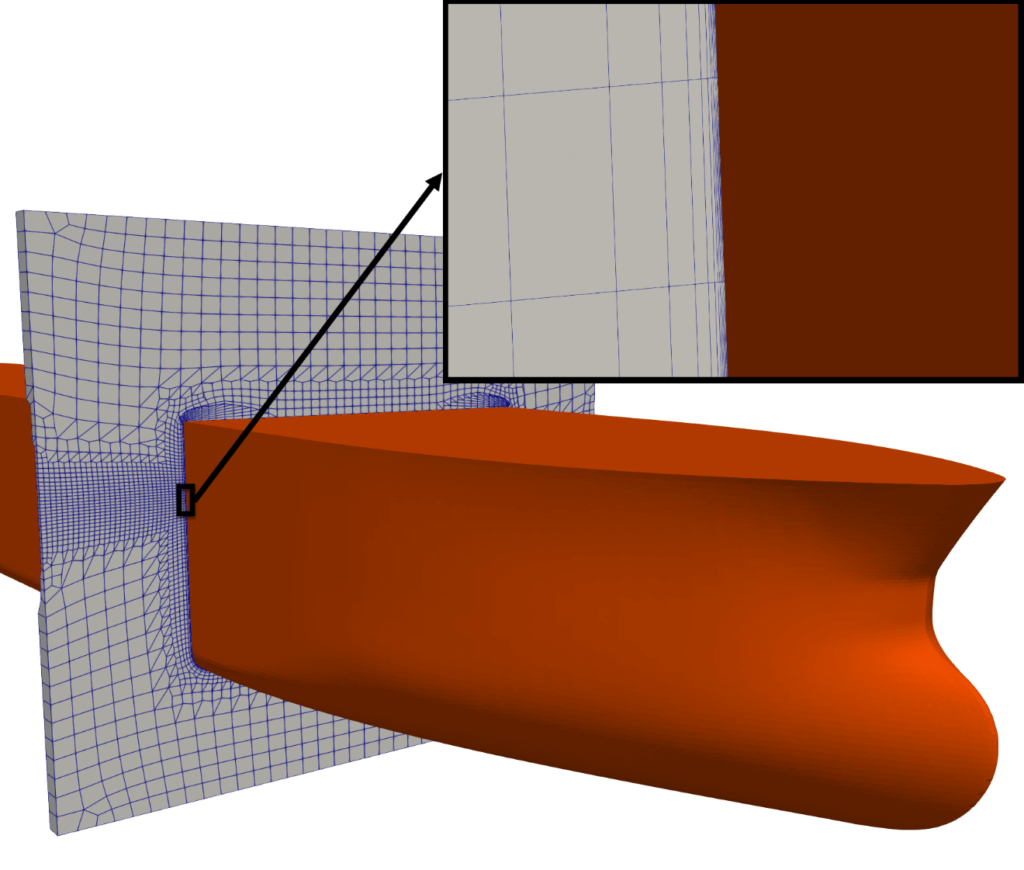by Dr. Rober Keser
I have been using cfMesh for more than seven years now, and it had a tremendous impact on my CFD workflow from the very beginning. I started using the open-source cfMesh for grid creation for various assignments during my master’s degree and I immediately saw its benefits in terms of ease of use and time required from CAD to working computational grid.
The first contact
My first contact with CF-MESH+ was during the final year of my master’s degree when I was doing aero simulations for the development of a small-scale racing car for the Formula Student competition at my university. The improved meshing workflow together with the available GUI streamlined our process for evaluating a large number of different aero configurations.
In 2019, together with my two colleagues from the University of Zagreb, Inno Gatin and Vuko Vukcevic, we founded In silico, an engineering company that specializes in numerical simulations and R&D for CFD. We offer a wide range of services, but our flagship service is Cloud Towing Tank which has the goal of bringing the best of Computational Fluid Dynamics to the marine industry. From the very beginning, cfMesh and CF-MESH+ were our go-to tools for mesh generation, and I can confidently say that they greatly contribute to our productivity and the robustness of our workflow.
The continuous improvement
As previously described, we have a long history with Creative Fields and their meshing software, so we have witnessed the continuous improvement and addition of great new features with each new version. I will just mention a few features and updates that had a substantial impact on our meshing workflow.
The improved handling of baffles often allows a great reduction in the number of cells without sacrificing important flow phenomena. For example, the superstructure of a ship often contains very thin walls, in comparison to other dimensions of the ship, which influence the aerodynamic load. Furthermore, we frequently encounter very thin guide vanes located within large stirring or settling tanks which would require a large number of computational cells if we would account for the thickness of such elements.
The continuous improvement of the boundary layer generation algorithm enables a robust and consistent tool for obtaining the desired y+ value at a different location within the computational domain without sacrificing the smooth transition from boundary layer cells to larger free stream cells despite a larger number of layers. The available options allow you to fully control the parameters of the boundary layers and you can easily tailor the grid to your specific needs. Our clients often have strict requirements regarding the quality of the grid, especially for y+ values at the ship’s hull. Therefore, the advanced boundary layer generation algorithm available within CF-MESH+ immensely simplifies and speeds up the meshing part of our workflow.

The advanced multi-domain meshing feature allows easier and more efficient meshing of complex computation domains. In the case of conjugated heat transfer simulations, you can easily mesh all regions in one go, and the interface between different regions is conformal. The available workflow even allows adding high-quality boundary layers only on the fluid side of the conformal interface (and skipping the generation of layers on the solid side) so you can keep the cell count low. Similarly, we often perform MRF simulations for open water tests of propellers, and the multi-domain meshing feature produces a high-quality grid with a conformal grid on the MRF interface, so you do not need to employ GGI (Generalized Grid Interface) or AMI (Arbitrary Mesh Interface).

Hourly licenses of CF-MESH+
The newest pricing strategy with the pre-paid license package, where you allocate meshing hours, instead of individual licenses is a great option for companies with a highly variable load in terms of the number of simulations that you are running in parallel. In this way, you can mesh multiple geometries in parallel with up-to-date software without any additional cost or procedures. In our case, this enables a very flexible workflow and offers excellent value for our money.
As engineers, one of the most crucial aspects of our work is accurate and efficient meshing for our simulations, and CF-MESH+ has consistently delivered exceptional results. Not only is the software user-friendly and intuitive, but the customer support team at Creative Fields has also been incredibly helpful and responsive to our needs. I am delighted to share our positive experience with CF-MESH+ and highly recommend it to anyone in need of reliable and high-quality meshing software.
I hope that you have found this post useful and that it has made you curious to try out our latest CF-MESH+, designed to alleviate the pain of meshing. You can also subscribe to our newsletter to stay informed on our newest developments.


